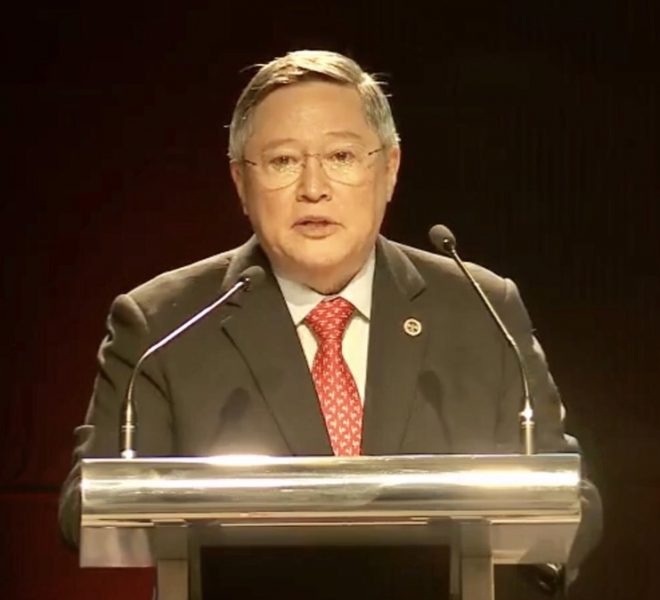Tax reform ‘key link” to Philippines moving from low-growth cycle
April 18, 2017
The Duterte administration’s proposed comprehensive tax reform program (CTRP) bill pending in the Congress is the "key link" to the “grand effort” to break out from the cycle of low growth and deliver a dynamic and truly inclusive economy to Filipinos, according to Finance Secretary Carlos Dominguez III. Dominguez said Malacanang's plan to speed up spending on infrastructure and on human capital by upgrading educational and health care systems, along with its goal to lower income tax rates to sharpen the Philippines’ global competitiveness, would require additional revenue measures that could only be generated via the tax reform program. “The CTRP is an indispensable component of the Duterte administration’s economic strategy. It is an audacious strategy that seeks to lift our country to upper middle-income status by 2022 and high-income status by 2040,” said Dominguez at Tuesday's opening of the first ‘Dutertenomics’ forum at the Conrad Hotel in Pasay City. Dominguez said this is the time to move decisively in carrying out this “grand effort." He said there is a convergence of positive factors conducive to high and inclusive growth, such as the low-interest rate regime, excess liquidity, benign oil prices, investment-grade credit rating, a young, vigorous work force and the strong support of countries like Japan and China. “We do not intend to fail in meeting the challenges of this time,” Dominguez said. “Fortunately, we have a leader capable of much audacity. We have a leader of vision and intense love of country. All the favorable factors are present. It is time now for a breakout.” He said the Duterte administration’s 10-point socioeconomic reform agenda takes into account these positive factors but the economic opportunities arising from them will bear real fruit “only if they are undertaken by audacious policymaking.” This reform agenda, Dominguez said, includes an infrastructure buildup that will entail trillions of pesos in investments that are necessary to help ensure that the next generation of Filipinos do not remain “in the same poverty trap we found ourselves in.” “Realigning income tax rates, however, will bring down revenues even as we improve tax administration and broaden the tax base. This means we have to introduce new revenue measures that will not only compensate for lower tax rates but also fund the massive infra program that commences now,” he added. “The CTRP, therefore, is the key link in the grand effort to break out from the cycle of low growth and build a dynamic and inclusive economy for our people,” Dominguez said. “It is a pro-active and pro-poor measure that supports the expansionary fiscal posture of the present administration.” Dominguez pointed out that after being saddled by a debt burden and the Asian financial crisis for many years, the country is currently enjoying a “Cinderella moment” when it is now highly capable of shifting the source of growth to an “investment-led” one that creates jobs and opens more economic opportunities for Filipinos. “We have completed our fiscal consolidation, which was started under the presidency of Gloria Arroyo.Our credit ratings attest to that. The debt burden is no longer a drag on our economic growth. We can now reshape our economic development so that it is investment-led,” he said. “This, in turn, will open the door to a truly inclusive economy. An investment-led growth pattern creates jobs and opens more economic opportunities for our people. We are now actively seeking investments not only to rebuild our depleted manufacturing sector but also to capitalize our agriculture to make it more efficient." DMS
Latest Videos
- THE UNTOLD STORY EXPERT INSIGHTS INTO THE UKRAINE
- NEGOTIATING A NEW ORDER US RUSSIA TALKS ON UKRAIN
- Ukraine: A Pawn in the Geopolitical Game? Will Trump Intervene?
- US VP VANCE CRITICIZES EUROPEAN DEMOCRACIES AT MUNICH SECURITY CONFERENCE
- UNCOVERING THE WEB OF DECEIT: CIA INFILTRATION OF THE MEDIA
- SHIFTING SANDS: TULSI GABBARD’S CONFIRMATION AND THE EVOLVING GLOBAL LANDSCAPE
- FAUCI SCANDAL: A THREAT TO GLOBAL HEALTH AND DEMOCRACY






